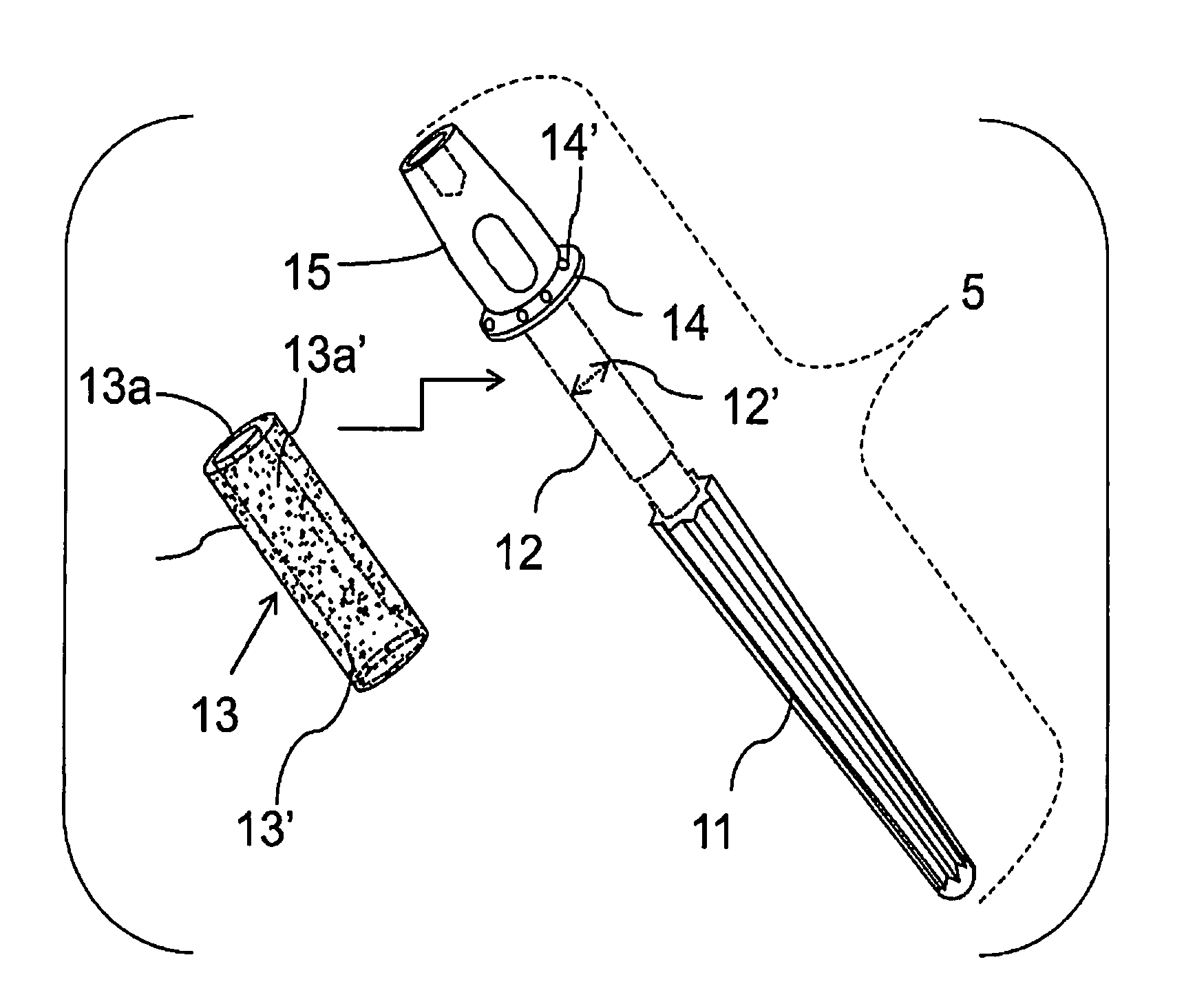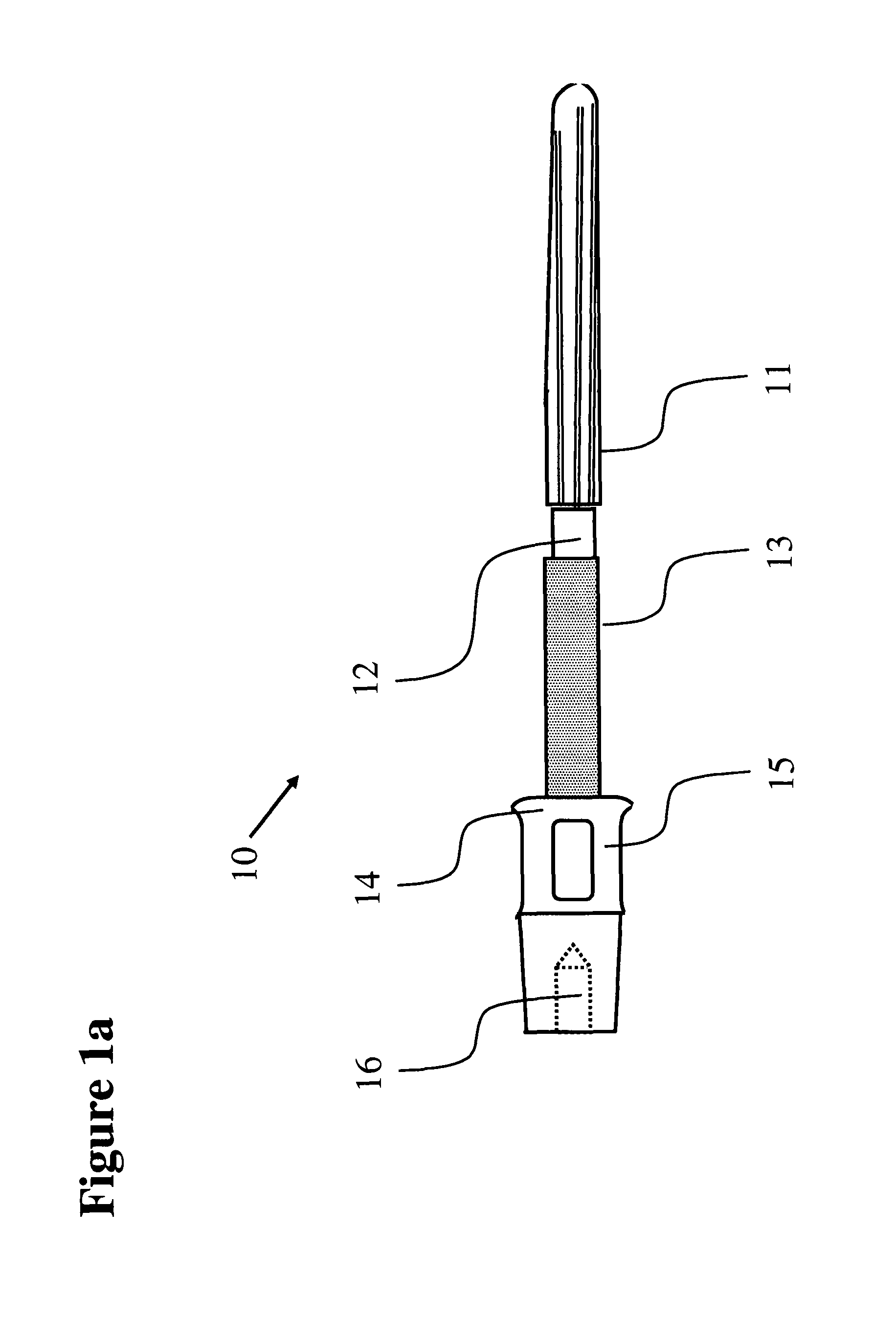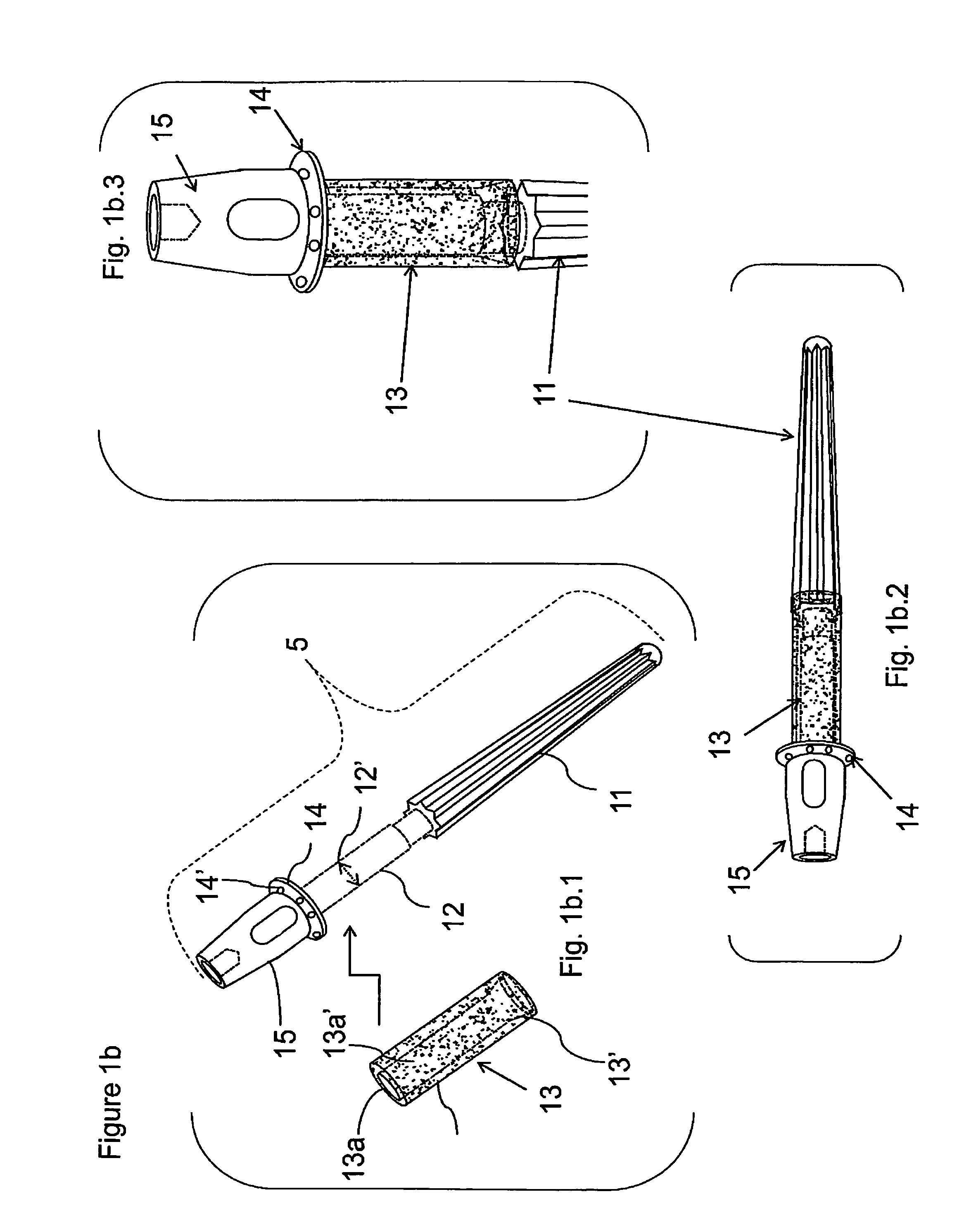Percutaneous implant for limb salvage
a percutaneous implant and limb technology, applied in the field of amputee limb replacement, to achieve the effect of promoting biological attachment of the skin, high quality bone tissue, and promoting bone and tissue preservation
- Summary
- Abstract
- Description
- Claims
- Application Information
AI Technical Summary
Benefits of technology
Problems solved by technology
Method used
Image
Examples
Embodiment Construction
[0043]Amputees, both in animals and humans, are generally assisted in returning to near normal activity through the attachment of an external prosthetic to the remnant stump of the limb. Coupling of the prosthesis is typically accomplished through coupling to the soft tissue of the remnant limb stump. However, this clinical approach to coupling presents many problems, including stump pain and sores, as well as physiological complications. Resulting sores create pain and consequent disuse of the limb. Physiological problems caused by failure of the prosthetic device to properly load the bone and soft tissues often result in atrophy of bone and muscle.
[0044]The percutaneous implant device is a novel implant design for replacing amputee limbs, which physiologically loads both bone and soft tissue. Preservation of bone and tissue is promoted, thereby mitigating or substantially eliminating pain associated with strapping a prosthetic to the stump. Advantageously, the percutaneous implant...
PUM
| Property | Measurement | Unit |
|---|---|---|
| length | aaaaa | aaaaa |
| length | aaaaa | aaaaa |
| porosity | aaaaa | aaaaa |
Abstract
Description
Claims
Application Information
 Login to View More
Login to View More - R&D
- Intellectual Property
- Life Sciences
- Materials
- Tech Scout
- Unparalleled Data Quality
- Higher Quality Content
- 60% Fewer Hallucinations
Browse by: Latest US Patents, China's latest patents, Technical Efficacy Thesaurus, Application Domain, Technology Topic, Popular Technical Reports.
© 2025 PatSnap. All rights reserved.Legal|Privacy policy|Modern Slavery Act Transparency Statement|Sitemap|About US| Contact US: help@patsnap.com



